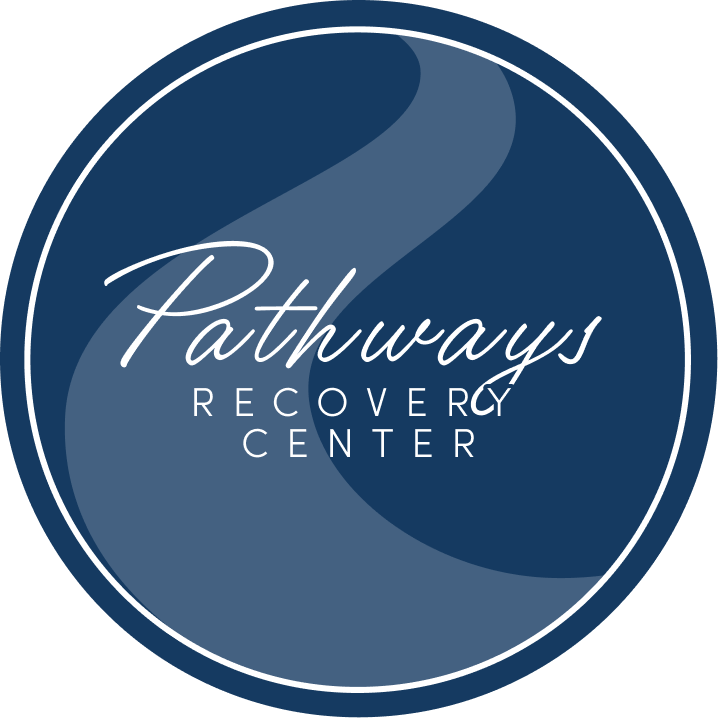Despite affecting millions of Americans, dual diagnosis—the co-occurrence of mental health disorders and substance use disorders—remains significantly under-diagnosed. According to the Substance Abuse and Mental Health Services Administration (SAMHSA), approximately 9.2 million adults in the United States have a co-occurring disorder, yet the majority do not receive the comprehensive treatment they need for both conditions.
This diagnostic gap isn’t just a statistical concern—it represents real people struggling with complex conditions that go unrecognized, leading to ineffective treatment, repeated relapses, and prolonged suffering. Understanding why dual diagnosis is so frequently missed is crucial for anyone who suspects they might be dealing with co-occurring disorders.
The Complexity of Overlapping Symptoms
One of the primary reasons dual diagnosis goes undiagnosed is the intricate way mental health symptoms and substance use symptoms can mask, mimic, or exacerbate each other. When someone presents for treatment, healthcare providers often see a confusing web of symptoms that can be difficult to untangle.
For instance, depression and alcohol use disorder share many overlapping symptoms including sleep disturbances, loss of interest in activities, and social withdrawal.
A person struggling with both conditions might be diagnosed with depression while their alcohol use is dismissed as a coping mechanism, or conversely, they might be treated for alcoholism while their underlying depression remains unaddressed.
Research from the National Institute on Drug Abuse (NIDA) demonstrates that these overlapping presentations are the rule rather than the exception, making accurate diagnosis challenging even for experienced clinicians.
Sequential Treatment Approaches Create Blind Spots
Many treatment systems still operate under outdated models that require individuals to address their substance use disorder first before treating mental health conditions, or vice versa. This sequential approach creates significant barriers to proper diagnosis because:
The “Chicken or Egg” Problem
Healthcare providers often struggle to determine which condition came first, spending valuable time trying to establish a timeline rather than treating both conditions simultaneously. This approach can leave one condition completely unaddressed while the person cycles through treatment for the other.
System Fragmentation
Mental health services and addiction treatment services are often housed in separate facilities with different staff, insurance requirements, and treatment philosophies. When someone seeks help at one type of facility, they may receive excellent care for one condition while the other goes unnoticed.
At Pathways Recovery Center, we understand that effective dual diagnosis treatment requires an integrated approach that addresses both conditions from the very beginning of treatment.
Stigma and Shame Prevent Honest Disclosure
The stigma surrounding both mental health conditions and substance use disorders creates additional barriers to accurate diagnosis. Many individuals experiencing co-occurring disorders face a double burden of shame that prevents them from being fully honest with healthcare providers.
Self-Stigma
People with dual diagnosis often blame themselves for their conditions, viewing their substance use as a moral failing rather than a medical condition. This self-blame can prevent them from seeking help or disclosing the full extent of their symptoms.
Provider Bias
Unfortunately, some healthcare providers still harbor unconscious biases about addiction, viewing it as a choice rather than a disease. The National Academy of Medicine has documented how these biases can lead to inadequate care and missed diagnoses.
Family and Social Pressure
Family members and friends may be more comfortable acknowledging one condition over another. A family might be willing to discuss a loved one’s depression but reluctant to address their drinking, or they might focus solely on the addiction while minimizing mental health concerns.
Inadequate Screening Tools and Protocols
Many healthcare settings lack comprehensive screening protocols that can effectively identify co-occurring disorders. Standard intake procedures often focus on the presenting problem without conducting thorough assessments for other conditions.
Primary Care Limitations
Primary care physicians, who are often the first point of contact for people seeking help, typically have limited time and training for comprehensive mental health and substance use assessments. Research from the National Institute on Drug Abuse found that primary care settings miss a significant percentage of co-occurring disorders due to time constraints and inadequate screening tools.
Emergency Department Challenges
Emergency departments frequently encounter individuals with co-occurring disorders during crisis situations. However, the acute care environment prioritizes immediate medical stabilization over comprehensive psychiatric evaluation, leading to missed opportunities for dual diagnosis recognition.
Training and Education Gaps
Many healthcare professionals receive specialized training in either mental health or addiction treatment, but few are adequately trained to recognize and treat both conditions simultaneously.
Siloed Education
Medical schools, nursing programs, and social work curricula often compartmentalize mental health and addiction education, failing to adequately prepare future clinicians for the reality of co-occurring disorders.
Continuing Education Deficits
Even experienced providers may lack current knowledge about dual diagnosis. The National Institute on Drug Abuse emphasizes the need for ongoing education about integrated treatment approaches.
Insurance and Healthcare System Barriers
The structure of healthcare financing and delivery systems can inadvertently discourage comprehensive dual diagnosis assessment and treatment.
Separate Funding Streams
Mental health services and substance abuse treatment often receive funding from different sources, creating artificial divisions in care delivery. This separation can result in incomplete assessments that focus only on conditions covered by specific funding streams.
Prior Authorization Requirements
Insurance companies may require individuals to “fail” at single-disorder treatment before approving integrated dual diagnosis treatment, delaying proper care and allowing conditions to worsen.
Misattribution of Symptoms to Substance Use
Healthcare providers may mistakenly attribute all psychiatric symptoms to substance use, assuming that mental health symptoms will resolve once substance use stops. While some symptoms are indeed substance-induced, many individuals have independent mental health disorders that require specific treatment.
The “Wait and See” Approach
Providers may delay mental health diagnosis and treatment, waiting to see if symptoms improve with sobriety. However, research from Harvard Medical School shows that untreated mental health conditions significantly increase relapse risk.
Substance-Induced vs. Independent Disorders
Distinguishing between substance-induced mental health symptoms and independent psychiatric disorders requires time, expertise, and comprehensive evaluation—resources that may not be available in all treatment settings.
Self-Medication Masks Underlying Conditions
Many people with undiagnosed mental health conditions unconsciously self-medicate with substances, which can mask the underlying psychiatric symptoms and delay proper diagnosis.
Temporary Relief Creates Confusion
When substances provide temporary relief from mental health symptoms, both the individual and healthcare providers may focus on the substance use without recognizing the underlying condition being treated through self-medication.
Normalized Coping
Society often normalizes certain types of substance use for managing stress, anxiety, or depression (“having a drink to relax”), which can prevent recognition of both the underlying mental health condition and the developing substance use disorder.
The Impact of Undiagnosed Dual Diagnosis
When dual diagnosis goes unrecognized, the consequences extend far beyond missed treatment opportunities:
Treatment Failure and Repeated Relapses
Individuals may cycle through multiple treatment attempts that address only one condition, leading to frustration, hopelessness, and the misconception that they are “untreatable.”
Progression of Both Conditions
Untreated mental health conditions and substance use disorders tend to worsen over time, creating increasingly complex clinical presentations that become harder to treat.
Secondary Complications
Undiagnosed dual diagnosis can lead to additional problems including legal issues, employment difficulties, and relationship breakdown.
Breaking Through the Barriers: What You Can Do
If you suspect you might have a dual diagnosis, there are steps you can take to ensure you receive proper evaluation and treatment:
Be Honest and Comprehensive
When seeking help, provide complete information about all substances you use and mental health symptoms, even if they seem unrelated. Include family history of mental health and substance use disorders, as well as previous treatment experiences and their outcomes.
Seek Integrated Treatment
Look for treatment providers who specialize in dual diagnosis and offer integrated care. Our residential inpatient treatment program at Pathways Recovery Center is specifically designed to address co-occurring disorders comprehensively.
Advocate for Yourself
If you feel your concerns aren’t being addressed, ask for comprehensive screening for both mental health and substance use disorders or request referrals to dual diagnosis specialists.
Educate Your Support System
Help family members and friends understand the complexity of dual diagnosis so they can provide appropriate support and encouragement for comprehensive treatment.
The Path Forward: Improving Recognition and Treatment
The healthcare system is gradually improving its approach to dual diagnosis recognition and treatment. Advances include:
Integrated Treatment Models
More treatment facilities are adopting integrated approaches that address both conditions simultaneously, like our comprehensive dual diagnosis treatment program.
Improved Screening Tools
New assessment instruments are being developed to better identify co-occurring disorders in various healthcare settings.
Enhanced Training Programs
Medical and mental health education programs are increasingly incorporating dual diagnosis training into their curricula.
Finding Hope in Proper Diagnosis
While the barriers to dual diagnosis recognition are significant, awareness of these challenges is the first step toward overcoming them. Proper diagnosis, while sometimes delayed, can be life-changing when it finally occurs.
Many individuals report feeling relief and hope when they finally receive an accurate dual diagnosis. Suddenly, their previous treatment failures make sense, and they can access appropriate care that addresses all aspects of their condition.
Getting the Help You Need
If you recognize yourself in this article—if you’ve struggled with treatment that didn’t seem to address all your concerns, or if you suspect you might have both mental health and substance use issues—know that help is available.
At Pathways Recovery Center, our experienced team is trained to recognize and treat co-occurring disorders. We provide comprehensive assessments that look at the whole person, not just individual symptoms. Our medically supervised detox program ensures safe withdrawal while our clinical team evaluates for underlying mental health conditions.
Don’t let another day pass wondering if there’s more to your story. Contact us today at 1 (888) 681-6726 to speak with one of our admission specialists about comprehensive dual diagnosis evaluation and treatment.
Remember: proper diagnosis is the foundation of effective treatment. When both conditions are recognized and treated together, recovery becomes not just possible, but probable. You deserve care that addresses all aspects of your health—don’t settle for anything less.
If you’re experiencing thoughts of self-harm or suicide, please contact the National Suicide Prevention Lifeline at 988 or seek immediate emergency care. This article is for informational purposes only and is not a substitute for professional medical advice, diagnosis, or treatment.




